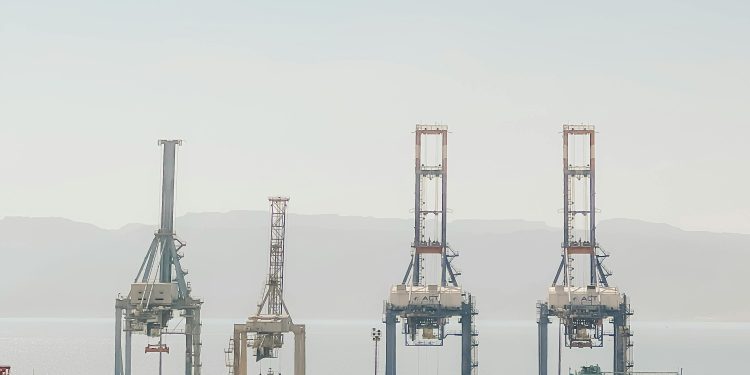In Kenya, Special Economic Zones (SEZs) and Export Processing Zones (EPZs) play a critical role in driving industrialization, creating jobs, and fostering economic growth.
Both zones offer incentives to investors, yet they serve distinct purposes and target different types of businesses. Understanding the differences between SEZs and EPZs is essential for entrepreneurs, investors, and policymakers looking to maximize opportunities in these areas.
This article breaks down the key features, benefits, and differences between SEZs and EPZs in Kenya.
In this article
What is an Export Processing Zone (EPZ)?
EPZs are designated areas aimed at promoting the manufacturing and export of goods. They are specifically designed to boost export-oriented industries by offering incentives and support for businesses focused solely on foreign markets.
Key Features of EPZs:
- Primarily target export-driven industries, particularly manufacturing.
- Provide shorter-term incentives compared to SEZs.
- Focus on duty-free imports of raw materials and equipment needed for production.
Export Processing Zones in Kenya:
- Athi River EPZ near Nairobi.
- Mombasa EPZ benefits from proximity to the port.
- Kilifi EPZ, is known for processing agricultural products.
Benefits of Export Processing Zones:
- Export-Focused Incentives: Duty-free imports and VAT exemptions on inputs used for manufacturing exports.
- Quick Setup: Streamlined processes for business registration and export approvals.
- Market Access: Preferential access to international markets under agreements like AGOA (African Growth and Opportunity Act).
What is a Special Economic Zone (SEZ)?
SEZs are designated areas where business-friendly policies are implemented to attract both domestic and foreign investment. These zones provide comprehensive incentives to encourage industrialization, export diversification, and overall economic development.
Key Features of SEZs:
- Focus on a wide range of industries, including manufacturing, logistics, and services.
- Encourage both local and international trade, not limited to exports.
- Offer long-term fiscal incentives such as tax holidays and reduced corporate taxes.
- Provide world-class infrastructure and streamlined business regulations.
Examples of SEZs in Kenya:
- Dongo Kundu SEZ in Mombasa.
- Tatu City SEZ near Nairobi.
- Naivasha Industrial Park, which leverages its proximity to geothermal energy.
Benefits of SEZs:
- Tax Incentives: Reduced corporate tax rates, VAT exemptions, and duty-free imports of machinery and raw materials.
- Infrastructure Development: Access to state-of-the-art facilities like industrial parks, ports, and transportation networks.
- Employment Opportunities: Creation of thousands of jobs through large-scale industrial investment
SEZs vs. EPZs: Key Differences
| Aspect | SEZs | EPZs |
|---|---|---|
| Primary Focus | Both local and export markets | Exclusively export markets |
| Industries Covered | Wide range (manufacturing, logistics, IT) | Primarily manufacturing |
| Incentives Duration | Long-term (up to 20 years) | Shorter-term |
| Target Investors | Domestic and foreign | Primarily foreign exporters |
| Geographical Scope | Large-scale areas | Smaller, factory-specific zones |
| Examples | Dongo Kundu SEZ, Tatu City SEZ | Athi River EPZ, Mombasa EPZ |
Which Zone is Best for Your Business?
Choosing between an SEZ and an EPZ depends on your business goals:
- If You’re Focused on Exporting:
EPZs are ideal if your primary goal is to manufacture goods for international markets. They offer robust export incentives like duty-free imports and VAT exemptions. - If You’re Targeting a Broader Market:
SEZs are suitable if you want to serve both local and international markets. The infrastructure and long-term benefits make them attractive for businesses with diverse goals. - If You Need Long-Term Stability:
SEZs provide more extended fiscal incentives and infrastructure support, making them a better option for businesses looking for stability and growth over the long haul.
Challenges Facing SEZs and EPZs
Despite their benefits, these zones face challenges:
- Infrastructure Gaps: Some SEZs and EPZs lack adequate infrastructure, affecting their effectiveness.
- Policy Uncertainty: Inconsistent policies can deter investors.
- Global Competition: Kenya’s zones must compete with well-established zones in countries like China and India.
Conclusion
SEZs and EPZs offer unique advantages for businesses in Kenya, depending on their operational goals. SEZs provide a broader scope, supporting local and international trade, while EPZs focus on boosting exports. By understanding the differences, businesses can make informed decisions that align with their objectives.
As Kenya continues to prioritize economic growth and industrialization, SEZs and EPZs remain integral to achieving these goals. Whether you’re a local entrepreneur or an international investor, these zones offer significant opportunities for growth and success.




